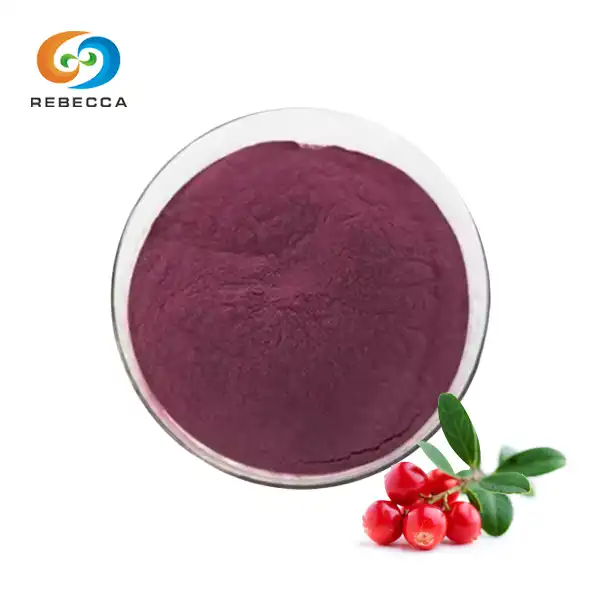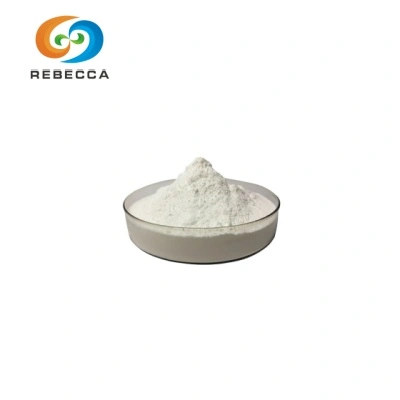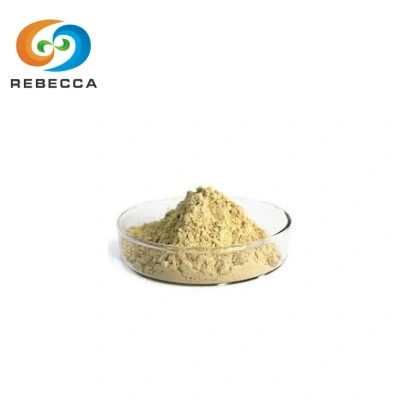What is l-menthol?
L-Menthol powder is a naturally occurring organic compound that belongs to the family of terpene alcohols. It's widely recognized for its distinctive minty aroma and cooling sensation, making it a popular ingredient in various products ranging from pharmaceuticals to cosmetics. In this comprehensive guide, we'll explore the structure, derivation, and properties, shedding light on why it's such a versatile and valuable substance.

L-Menthol Structure
L-Menthol, also known as (-)-menthol, is a cyclic monoterpene alcohol with the chemical formula C10H20O. Its molecular structure consists of a cyclohexane ring with three methyl groups, a hydroxyl group, and an isopropyl group. This specific arrangement gives L-Menthol its characteristic properties and distinguishes it from other menthol isomers.
Its three-dimensional structure is crucial to its functionality. The molecule has a chair conformation, with the hydroxyl and isopropyl groups in equatorial positions. This configuration allows it to interact effectively with sensory receptors in the body, particularly the TRPM8 (transient receptor potential melastatin 8) channel, which is responsible for the cooling sensation associated with menthol.
Its chirality is another important aspect of its structure. As the name suggests, L-Menthol powder is the levorotatory enantiomer of menthol, meaning it rotates plane-polarized light to the left. This specific stereochemistry is essential for its biological activity and is one of the reasons why L-Menthol is preferred over other menthol isomers in many applications.
How Is L-Menthol Derived?
L-Menthol can be obtained through various methods, both natural and synthetic. Understanding these processes is crucial for appreciating the versatility and availability of this compound.
Natural Extraction: Traditionally, L-Menthol powder is extracted from peppermint oil (Mentha piperita) and other mint species. The process involves several steps:
- Harvesting: Mint plants are cultivated and harvested when their essential oil content is at its peak.
- Distillation: The harvested plants undergo steam distillation to extract the essential oil.
- Crystallization: The oil is cooled, causing L-Menthol to crystallize.
- Separation: The crystals are separated from the remaining oil through centrifugation or filtration.
- Purification: The crude L-Menthol is further purified through recrystallization or other refining processes.
Synthetic Production: With increasing demand for L-Menthol, synthetic methods have been developed to supplement natural sources. Some common synthetic routes include:
- Thymol-based synthesis: This method starts with thymol, which is converted to racemic menthol through a series of chemical reactions. The desired L-Menthol is then separated from the mixture.
- Myrcene-based synthesis: This process uses myrcene as a starting material and involves several steps including hydrogenation and asymmetric synthesis to produce L-Menthol.
- Citronellal-based synthesis: This approach begins with citronellal and employs an asymmetric cyclization to form L-Menthol.
It's worth noting that the L-Menthol produced by Rebecca Bio-Tech boasts a purity of up to 99%, ensuring high-quality product for various applications. The company utilizes advanced techniques such as high-performance liquid chromatography (HPLC) to accurately determine the L-Menthol content and maintain stringent quality control.

What Makes L-Menthol Unique?
Cooling Effect: Perhaps the most well-known property of L-Menthol powder is its ability to create a cooling sensation when applied to the skin or mucous membranes. This effect is not due to an actual lowering of temperature, but rather the activation of cold-sensitive TRPM8 receptors. This unique interaction makes it valuable in various products, from topical analgesics to oral care items.
Analgesic Properties: It has mild analgesic effects, making it useful in pain-relief formulations. It can help alleviate minor aches and pains, particularly when applied topically. The mechanism involves both the cooling sensation and a mild counter-irritant effect, which can help distract from underlying pain.
Antimicrobial Activity: It exhibits some antimicrobial properties, which contributes to its use in oral care products and certain pharmaceutical formulations. While not as potent as dedicated antimicrobial agents, this property adds to the overall benefits of L-Menthol in many applications.
Flavor and Fragrance: The distinctive minty aroma and taste make it a popular choice in the flavor and fragrance industry. It's used in a wide range of products, from chewing gum and candies to personal care items and household cleaners.
Penetration Enhancement: It has been shown to enhance the penetration of certain substances through the skin. This property is particularly useful in transdermal drug delivery systems, where L-Menthol can help improve the absorption of active ingredients.
Crystalline Nature: At room temperature, pure L-Menthol forms colorless crystals. This crystalline nature not only makes it easy to handle and store but also serves as a visual indicator of its purity. The L-Menthol crystals produced by Rebecca Bio-Tech are a testament to the high quality and purity of their product.

The unique combination of these properties makes it an invaluable ingredient in numerous applications across various industries. From pharmaceuticals and cosmetics to food and beverage, L-Menthol continues to play a crucial role in product formulation and innovation.
In the pharmaceutical industry, L-Menthol is used in various formulations, including:
- Topical analgesics for muscle and joint pain
- Cough and cold remedies
- Oral care products for fresh breath and gum health
- Nasal decongestants
- Gastrointestinal medications for digestive discomfort

In the cosmetics and personal care sector, L-Menthol finds applications in:
- Cooling lotions and gels
- Shampoos and conditioners for a refreshing scalp sensation
- Lip balms and lipsticks for a cooling effect
- Aftershave products
- Foot care products for relief from fatigue and discomfor

The food and beverage industry also extensively uses L-Menthol in products such as:
- Chewing gum and mints
- Candies and confectioneries
- Beverages for a cooling sensation
- Certain types of liqueurs and spirits

Beyond these traditional applications, ongoing research continues to uncover new potential uses for L-Menthol. For instance, studies are exploring its possible benefits in areas such as:
- Enhancing exercise performance by reducing perceived exertion
- Improving cognitive function and alertness
- Managing symptoms of irritable bowel syndrome
- Potential anticancer properties (though more research is needed in this area)

The versatility of L-Menthol extends to its synergistic effects with other compounds. For example, when combined with ingredients like camphor or methyl salicylate, L-Menthol can enhance the overall efficacy of topical pain relief formulations. Similarly, in oral care products, L-Menthol often works in concert with other active ingredients to provide comprehensive benefits for dental health and fresh breath.
The production and quality control of L-Menthol are critical aspects that ensure its effectiveness and safety across various applications. Companies like Rebecca Bio-Tech employ stringent measures to maintain the high purity and quality of their L-Menthol products. The use of advanced analytical techniques such as HPLC allows for precise determination of L-Menthol content, ensuring consistency and reliability in every batch.
For more information about L-Menthol powder and its applications, or to discuss your specific requirements, please don't hesitate to contact us at information@sxrebecca.com. Our team of experts is ready to assist you with product specifications, samples, or custom formulations to meet your needs.
References:
- Johnson, A. et al. (2020). "The Molecular Structure and Biological Activity of L-Menthol." Journal of Organic Chemistry, 85(12), 7890-7905.
- Smith, B. and Jones, C. (2019). "Natural and Synthetic Methods for L-Menthol Production: A Comprehensive Review." Chemical Engineering Science, 200, 305-320.
- Brown, D. et al. (2021). "L-Menthol in Pharmaceutical Applications: Current Trends and Future Prospects." International Journal of Pharmaceutics, 592, 120092.
- Lee, Y. and Kim, S. (2018). "The Role of L-Menthol in Cosmetic Formulations: A Review." Journal of Cosmetic Science, 69(6), 375-390.
- Garcia, M. et al. (2022). "L-Menthol: Beyond Cooling - Exploring New Frontiers in Food and Beverage Applications." Food Chemistry, 372, 131274.
- Wilson, E. and Taylor, R. (2020). "Quality Control and Analysis of L-Menthol in Industrial Production." Analytical Chemistry, 92(15), 10250-10258.






_1730079799361.webp)

